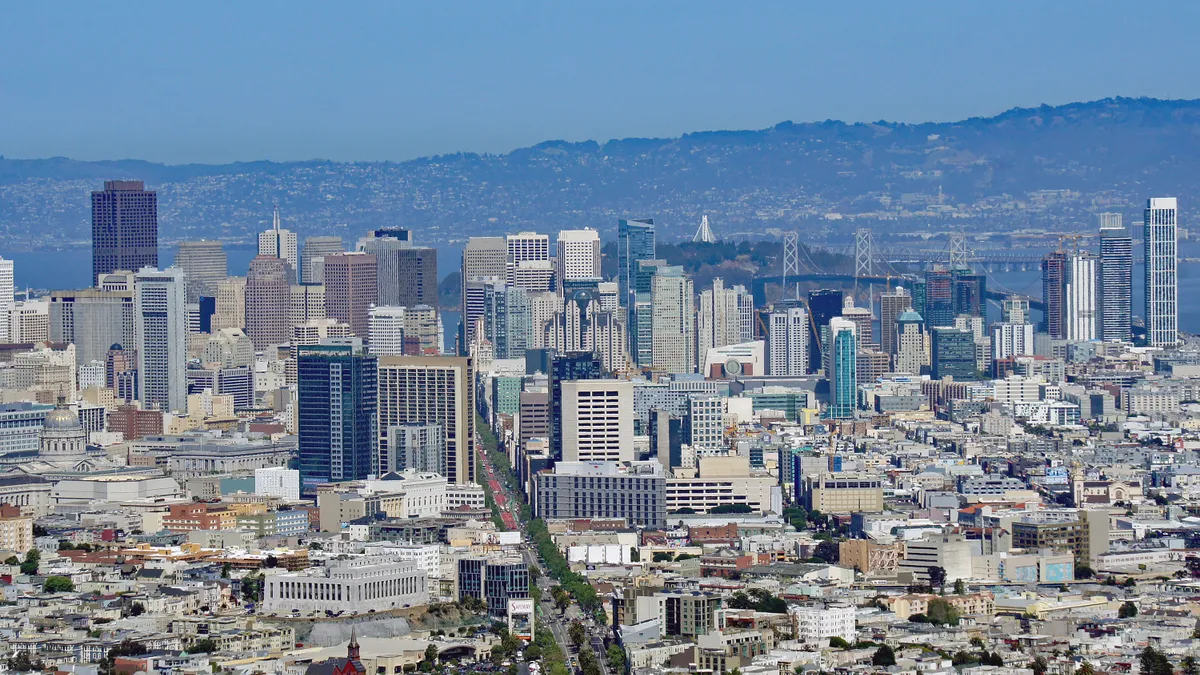Dive Brief:
- San Francisco Mayor London Breed announced on Monday a plan to transition commercial buildings larger than 50,000 square feet to 100% renewable energy by 2030.
- Under the plan, the city's largest buildings (approximately 50 buildings of at least 500,000 square feet) would have to switch to 100% renewable electricity by 2022; buildings of smaller sizes would have staggered deadlines through 2030. Both the city and the Pacific Gas and Electric Co. (PG&E) utility offer renewable electricity options, according to the San Francisco Chronicle.
- San Francisco has a plan to use only renewable electricity citywide by 2030 and to become carbon neutral by 2050.
Dive Insight:
According to city data, about 44% of San Francisco’s greenhouse gas emissions come from buildings, with about half from commercial. It’s not quite as large a source as transportation, but could be an easier target as the city tries to ratchet down its carbon footprint. Commercial owners can switch to greenhouse gas-free utility plans, limiting their carbon footprint and giving more incentive to utilities to install and purchase renewable energy.
The Chronicle reports that the city’s environment department estimates utility bills would rise by between 2% and 4% if building owners adopt the San Francisco Public Utilities Commission’s CleanPowerSF program, or by up to 5% for the PG&E renewable plan.
The proposal — which is set to be introduced to the city’s Board of Supervisors next month by mayor London Breed — would make San Francisco the leader in commercial building requirements, although other cities have targeted the sector for emission cuts. A bill passed last week by the New York City Council sets emissions caps for certain building, and requires property owners to start retrofitting windows, heating systems and insulation to cut emissions. The legislation sets a goal of cutting emissions 40% by 2030 and 80% by 2050 (that bill includes residential buildings, which has led to some blowback). In Chicago, Mayor Rahm Emanuel introduced a voluntary challenge to building owners to purchase 100% renewable energy; St. Paul, MN set a goal to make public and private buildings carbon neutral by 2050.
The building proposals mark another attempt by cities to take control of climate change efforts in the absence of federal leadership. Since the Trump administration withdrew the U.S. from the United Nations Paris climate agreement, city and state leaders have ramped up their own greenhouse gas reduction goals to fill the gap.











